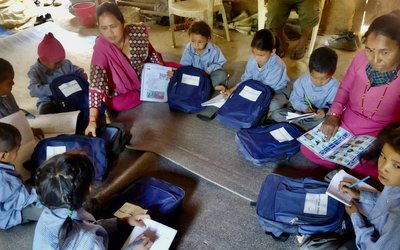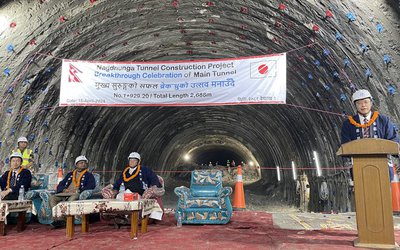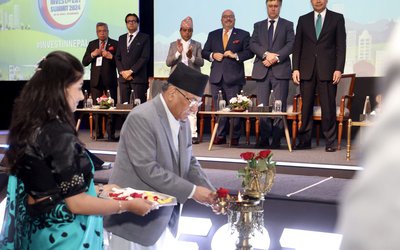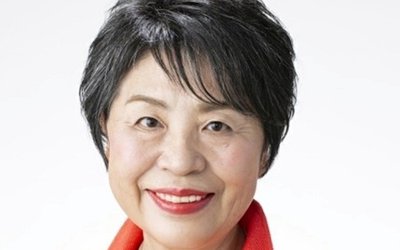
On 9 April 2021-an yearly report of a longitudinal study called ‘A Survey of Nepali People’ in 2020’ was released jointly by the Vice-Chancellor of Kathmandu University and Madam Ambassador of Australia to Nepal in the gracious presence of a highly dignified audience inclusive of, inter alia, veteran scholars, lawmakers, representatives from federal, provincial and local government bodies, and colleagues from Media houses. This is the third report (2017; 2018 and 2020) in the series. The study was based on public opinions—a nationally representative sample of 7,060 Nepalis, randomly selected from 588 wards across the country’s seven provinces to capture a public mood on five key areas, which include ‘public outlook and national mood’; ‘personal safety and dispute resolution’; ‘identity and social relations’; ‘governance and political participation; and ‘economic outlook and access to information.
Capturing public mood through opinion surveys are established vehicles and are expected to help the government of the day to better grapple with public moods and priorities and to realign the course of development, service delivery and overall governance system. In this context, although a snapshot of a particular time, the report can provide important insights and path forward because the findings presented in the report may be generalized as the respondents are randomly selected from the Nepali population from the national, provincial and local levels, employing all the rigors of contemporary polling science. However, one important point that needs to be flagged out here, for this particular report, is that the fieldwork for the survey was conducted in February-March 2020, just before the Government of Nepal (GON) decided to impose a national lockdown to contain the novel coronavirus (COVID-19). As this survey timeframe captured perceptions of Nepalis just before the influence and impacts of COVID-19 in the country, the SNP 2020 can also serve as a baseline for future research, comparing the national mood before and after the national lockdown.

The results of the survey show that the majority of Nepali (65.6%) believe that the country was moving in the right direction by the February-March period of 2020 and they were more optimistic about the country’s direction than they had been in 2017 and 2018. The findings also demonstrate that the top four reasons for optimism are better roads (73.8%), improvements in the supply of electricity (46.0%), increases in access to health services (31.8%), and increases in access to education (30.7%). A number of other positive findings include issues such as improving personal and local security-related problems or threats (85%); improving social conditions (84.3%); improving local economic conditions (78.5%); increasing trust with local government bodies (84.6%); improving local political conditions (55%). Furthermore, Nepalis levels of satisfaction with health (6.25 out of 10), road (6.26 out of 10) and education (6.35) are also over average. These findings show that the country was moving towards right direction in 2020 prior to Corona Virus forced national lockdown and socio-economic impacts of COVID-19 in Nepal.
However, the findings of the report also present some crucial issues that need immediate attention. For examples, more than two-thirds (68.4%) of Nepalis are still unaware of the changes brought by the constitution of Nepal 2015; approximately three-fourth of the Nepalis (71.6%) are entirely unaware of any development projects or budget planned for implementation by their respective local governments, provincial governments or federal government. More than four-fifths (85.5%) of Nepalis have not participated in preparing any local development plans for implementation in their local areas and only a small percentage of Nepalis, from 16.6% to 23.2%, have heard about public hearings and public audits. It indicates that public participation in development processes and decision-making is still scanty in Nepal. Only 43.8% of the respondents regard political parties as trustworthy institutions while 91.8% of them regard media to be the same. Nepalis identify corruption as one of the most prominent challenges for national development.
Overall, the report is comprehensive as it captures five broad categories as noted above and sought public opinions on many issues that Nepalis encounter in their day-to-day life. The report is available online for free and the data of the report is also publicly available for perusal and further research. In sum, the report has presented mixed feelings of Nepali people. On the one hand, the majority of Nepalis are optimistic that the country is moving in the right direction yet a large number of people, although a minority, do not seem to be feeling so. While better roads, improved water services and improved electricity services are the reasons of the optimism, poor quality roads, no-timely maintenance of roads are also the reasons of the pessimism. While development activities and outcomes are the sources of optimism, inadequate public participation and communication of information about public hearings, public audits and tax increases are the reasons for the pessimism. The finding also shows that the more people are educated, the better they understand the system and tend to be less optimistic. The report indicates that more people need to be made aware of constitutional changes; about public services made available by the three layers of governments; about inclusive public participation and voice through improved, reliable and transparent communication and governance system, focusing not only on the outcomes but also valuing the processes of development, service delivery and governance system. This may generate hope and aspirations and Nepalis may be more optimistic.
Dr. Chandra Lal Pandey is the Coordinator and A. Professor of Community Development Program, SoA, Kathmandu University. He is also the author of the “Personal Safety and Dispute Resolution” and “Governance and Political Participation” chapters of the Survey of Nepali People 2018 and 2020. The views expressed in this article are of the authors only.
- 16thPeriodic Plan for Delivering Basic Services and Fundamental Rights?
- Feb 08, 2024
- Disaster Governance: Theory And Practice In Nepal
- Dec 05, 2023
- Haphazard Urbanization Or Sustainable Smart Cities In Nepal?
- Jun 28, 2023
- Say No To Pre-Election Coalition
- Jul 14, 2022
- Corruption: Practices & Remedies
- Oct 02, 2020

















